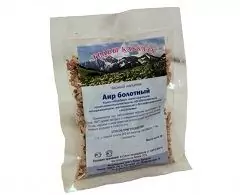Table of contents:
- Pentaflucin
- Release form and composition
- Indications for use
- Contraindications
- Method of administration and dosage
- Side effects
- special instructions
- Drug interactions
- Analogs
- Terms and conditions of storage
- Terms of dispensing from pharmacies
- Pentaflucin: prices in online pharmacies

Video: Pentaflucin - Instructions For Use, Indications, Doses, Analogues

2024 Author: Rachel Wainwright | [email protected]. Last modified: 2023-12-15 07:39
Pentaflucin
Instructions for use:
- 1. Release form and composition
- 2. Indications for use
- 3. Contraindications
- 4. Method of application and dosage
- 5. Side effects
- 6. Special instructions
- 7. Drug interactions
- 8. Analogs
- 9. Terms and conditions of storage
- 10. Terms of dispensing from pharmacies
Prices in online pharmacies:
from 116 rubles.
Buy

Pentaflucin is a combined drug for eliminating symptoms of acute viral and colds, analgesic, antipyretic and antihistamine action, increasing the body's resistance.
Release form and composition
Dosage form of Pentaflucin - granules for preparation of a solution for oral administration: a mixture of cylindrical, round or irregular granules, from yellow-green to white with a creamy shade and white (in plastic-coated paper bags; in a cardboard box 5 or 10 sachets) …
Content of active substances in 1 sachet (5000 mg):
- Paracetamol - 500 mg;
- Ascorbic acid (vitamin C) - 200 mg;
- Calcium gluconate - 200 mg;
- Diphenhydramine (diphenhydramine hydrochloride) - 20 mg;
- Rutin (as rutoside) 20 mg
Auxiliary components: polyvinylpyrrolidone (povidone), sugar (sucrose), soluble saccharin (sodium saccharinate), citric acid.
Indications for use
Pentaflucin is recommended for use in adult patients for the treatment of the following symptoms of acute respiratory infections (acute respiratory diseases) and acute respiratory viral infections (acute respiratory viral infections):
- Heat;
- Chills, body aches;
- Headache and muscle pain;
- Nasal congestion.
The drug is also used to increase the body's nonspecific resistance to infection.
Contraindications
- Severe renal and / or hepatic impairment;
- Diseases of the blood with a tendency to bleeding and hemorrhage;
- Hereditary deficiency of the enzyme glucose-6-phosphate dehydrogenase (G6PD);
- Hyperoxaluria, nephrourolithiasis (calcium), nephrolithiasis;
- Thrombophilia (tendency to thrombosis);
- Sucrose-isomaltose insufficiency, glucose-galactose malabsorption, congenital fructose intolerance;
- Period of pregnancy breastfeeding (lactation);
- Children and adolescents under 18 years of age (no data from clinical studies);
- Hypersensitivity to any of the components of Pentaflucin.
Take the drug with caution in case of constitutional hyperbilirubinemia (Gilbert's syndrome).
If it is necessary to use the drug during lactation, it is required to interrupt breastfeeding for the entire duration of therapy.
Method of administration and dosage
The granules are taken orally, dissolving the contents of 1 sachet in 0.5 cups of hot boiled water.
Recommended dosage regimen: 1 sachet 3-4 times a day, the course of therapy is 3-5 days.
It is necessary to take only a freshly prepared solution, it should be shaken before use, the presence of a slight sediment / suspension is allowed.
Side effects
If the recommended dosage regimen is observed, in rare cases, against the background of the action of the active components of Pentaflucin, the following side effects are possible:
- Complex of active ingredients: allergic skin reactions, constipation, nausea, vomiting;
- Paracetamol: changes in the peripheral blood picture (leukopenia, thrombocytopenia, agranulocytosis), nephrotoxic and hepatotoxic effects (long-term use in high doses);
- Diphenhydramine: impaired coordination of movements and speed of psychomotor reactions, drowsiness, insomnia, irritability, euphoria, dizziness, tremor;
- Rutoside: flushing of the face, diarrhea.
In case of observation of any adverse reactions, their aggravation or manifestation of other, previously not noted effects, you should immediately inform your doctor about it.
Symptoms of a Pentaflucin overdose are: stomach pain, nausea, vomiting; after a few days, signs of liver damage are diagnosed, in some cases, the development of severe liver failure, encephalopathy and coma is possible.
To treat the condition, the patient at home should wash the stomach, take adsorbents (activated carbon) and immediately consult a doctor. Further, symptomatic therapy is recommended (injections of acetylcysteine and methionine).
special instructions
It is not recommended to combine taking Pentaflucin with alcoholic beverages in order to avoid toxic liver damage.
In the process of therapy, care should be taken when driving vehicles and engaging in other potentially hazardous activities that require quick psychomotor reactions and increased concentration of attention.
Patients with diabetes should take into account that the preparation contains sugar, in 1 sachet - 0.33 XE.
Drug interactions
The presence in the preparation of active substances of a wide spectrum of pharmacological activity determines the possible drug interaction of Pentaflucin with other drugs / substances.
Paracetamol:
- Uricosuric medicines - reduces their effectiveness;
- Anticoagulants - reduces the synthesis of procoagulant factors in the liver (the use of paracetamol in addition in high doses increases the effect);
- Inducers of microsomal oxidation in the liver (tricyclic antidepressants, barbiturates, rifampicin, phenytoin, phenylbutazone), hepatotoxic substances / drugs, ethanol - increase the production of hydroxylated active metabolites, causing the possibility of severe intoxication even with a slight overdose of paracetamol;
- Barbiturates (in case of prolonged use) - reduce the effectiveness of paracetamol;
- Ethanol - contributes to the development of acute pancreatitis;
- Non-steroidal anti-inflammatory drugs (NSAIDs) - with prolonged joint use, the risk of developing analgesic nephropathy, renal papillary necrosis, end-stage chronic renal failure increases;
- Diflunisal - increases the likelihood of developing hepatotoxicity due to a 50% increase in the plasma concentration of paracetamol;
- Myelotoxic drugs / drugs - increase the manifestations of hematotoxicity.
Diphenhydramine (diphenhydramine hydrochloride):
- Drugs that depress the central nervous system (central nervous system) and ethanol - diphenhydramine hydrochloride potentiates their action;
- MAO (monoamine oxidase) inhibitors - enhance its anticholinergic effect.
Ascorbic acid (vitamin C):
- Benzylpenicillin and tetracyclines - their concentration in the blood increases;
- Ethinylestradiol, including the part of oral contraceptives - in a dose of 1000 mg per day, vitamin C increases its bioavailability;
- Heparin and indirect anticoagulants - their effectiveness decreases;
- Iron preparations - their absorption in the stomach improves, ferric iron is converted into bivalent;
- Deferoxamine - iron excretion may increase;
- Acetylsalicylic acid - its excretion in the urine decreases and the excretion of vitamin C increases, the absorption of ascorbic acid decreases by 30%;
- Short-acting salicylates and sulfonamides - the excretion of acids by the kidneys slows down, the excretion of drugs with an alkaline reaction (including alkaloids) increases, the concentration of oral contraceptives in the blood decreases, the risk of crystalluria increases;
- Isoprenaline - the chronotropic effect decreases;
- Barbiturates and primidone - increase the excretion of ascorbic acid in the urine.
Calcium gluconate:
- Quinidine - probably an increase in its toxicity and a slowdown in intraventricular conduction of the heart;
- Antibiotics of the tetracycline series: form insoluble complexes with calcium gluconate, which reduces the antibacterial effect;
- Tetracyclines, digoxin, oral iron preparations - absorption decreases (an interval between their doses should be observed at least 2 hours);
- Thiazide diuretics - can increase hypercalcemia and reduce the effect of calcitonin in hypercalcemia;
- Phenytoin - its bioavailability decreases;
- Carbonates, salicylates, sulfates are pharmaceutically incompatible with calcium gluconate, since they form insoluble or sparingly soluble calcium salts;
- Slow calcium channel blockers - the therapeutic effect decreases.
Interaction of active components of Pentaflucin: ascorbic acid enhances the pharmacological effect of rutin (rutoside).
Acetylsalicylic acid, fresh juices, alkaline drinks, oral contraceptives - reduce the absorption and absorption of the drug.
Analogs
Pentaflucin analogues are: Antigrippin, Coldflu, Coldrex Max Influenza
Terms and conditions of storage
Store in a dry, dark place at a temperature not exceeding 25 ° C. Keep out of the reach of children.
Shelf life is 2 years.
Terms of dispensing from pharmacies
Available without a prescription.
Pentaflucin: prices in online pharmacies
|
Drug name Price Pharmacy |
|
Pentaflucin for children granules for preparation of oral solution 3 g 10 pcs. 116 RUB Buy |
|
Pentaflucin granules for oral solution 5 g 5 pcs. 118 RUB Buy |
|
Pentaflucin granules for oral solution 5 g 10 pcs. 146 r Buy |
|
Pentaflucin daily granules for oral solution 5 g 10 pcs. 170 RUB Buy |
|
Pentaflucin granules for prig solution for internal approx. 5g 10 pcs. RUB 186 Buy |
Information about the drug is generalized, provided for informational purposes only and does not replace the official instructions. Self-medication is hazardous to health!
Recommended:
Spring Adonis - Properties, Indications For Use, Reviews

Adonis is a herbaceous plant from the genus of buttercups. The pharmaceutical industry produces on the basis of adonis tincture and tablets of Adonizid, which are prescribed for cardiac neurosis, vegetative vascular dystonia, etc
Marsh Calamus - Indications For Use, Properties

Calamus marsh has a beneficial effect on digestion and reduces gas formation in the intestines
Althea Officinalis - Properties, Indications For Use

Marshmallow is a medicinal plant with expectorant and anti-inflammatory properties
Vitamin B5 - Biological Value, Indications For Use

Vitamin B5 is a water-soluble vitamin (aka calcium pantothenate or pantothenic acid). Takes part in the metabolism of amino acids, fats and carbohydrates
Ergot - Useful Properties, Application, Indications, Doses

Ergot is a parasitic fungus of the ergot family found on some cereals, most often on ears of wheat and rye. In official medicine, drugs made from ergot alkaloids are used to treat nervous disorders, migraines, and uterine bleeding. In folk medicine, ergot is used for headaches, migraines, mental disorders, and also as a vasodilator in the treatment of hypertension






